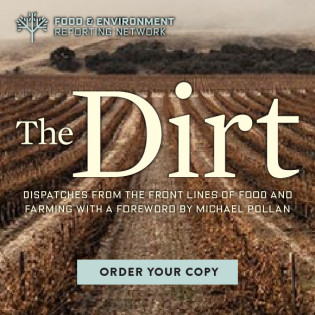Mother Jones: Syria Holds the Secret to Our Species’ Survival
Mark Schapiro | Sep. 18, 2017
The fertile crescent offers a strategy for adapting to climate change.
This story was originally published by Food and Environment Reporting Network.
Salvatore Ceccarelli knew he was engaging in a subversive act when, in 2010, he took two 20 kilo sacks of bread and durum wheat seeds from a seed bank outside of Aleppo, Syria and brought them to Italy during a visit back to his home country. Now, seven years later, those seeds from the Fertile Crescent, the birthplace of domesticated agriculture, with thousands of years of evolution behind them, are poised to challenge the system of plant patenting in Europe, and, soon enough perhaps, the United States.
Ceccarelli, one of the world’s foremost seed scholars and practitioners and an honorary research fellow at Biodiversity International, has consulted with governments on policies to encourage biodiversity. He has also been a leading advocate of participatory plant breeding—which, as he describes it, means engaging farmers in the process of breeding new crop varieties, rather than leaving that to the rapidly consolidating group of global seed companies.
Ceccarelli arrived in Syria in 1984 and stayed for the next quarter-century as a senior breeder and researcher at the International Center for Agricultural Research in Dry Areas (ICARDA), one of nine UN specialized agencies founded to protect regionally evolved seeds. His specialty is wheat, barley and other cereals, bred for dry and hot climates—precisely the conditions that many of the earth’s food-growing lands now face as climate change raises the temperature and disrupts precipitation patterns.
ICARDA was based in Tal Hadya, a town about 20 miles outside of Aleppo, until it was finally abandoned last year when the city became a focus of the Assad government’s brutal counter-offensive against Syrian rebels, including the Islamic State. Ceccarelli was gone by the time the last Syrian scientists were forced to evacuate, but he had ensured that at least a part of the seed bank’s legacy lives on in Italy. (ICARDA’s work continues in Morocco and Lebanon and a collection of its seeds is stored at the Svalbard Global Seed Vault in Norway).

 If it continues beyond 2018, the global dimensions of the seed business suggest it would not take long for the principles to make their way into the United States, where similar research is underway. The experiment could force a reassessment of existing rules, which prioritize individual varieties. You can’t ‘patent’ a population, or at least in ways that patents are currently defined. Populations are dynamic, changing in response to changing conditions—unlike hybrids or genetically engineered seeds, the patenting of which has been the foundation for the companies that now dominate the global seed trade, and which rely on standardized regulations to export their seeds.
If it continues beyond 2018, the global dimensions of the seed business suggest it would not take long for the principles to make their way into the United States, where similar research is underway. The experiment could force a reassessment of existing rules, which prioritize individual varieties. You can’t ‘patent’ a population, or at least in ways that patents are currently defined. Populations are dynamic, changing in response to changing conditions—unlike hybrids or genetically engineered seeds, the patenting of which has been the foundation for the companies that now dominate the global seed trade, and which rely on standardized regulations to export their seeds.